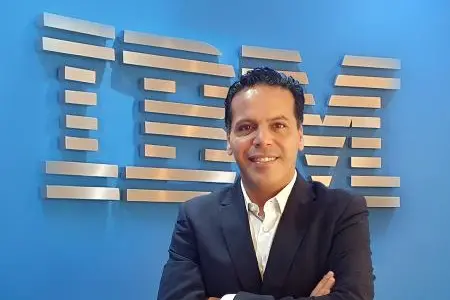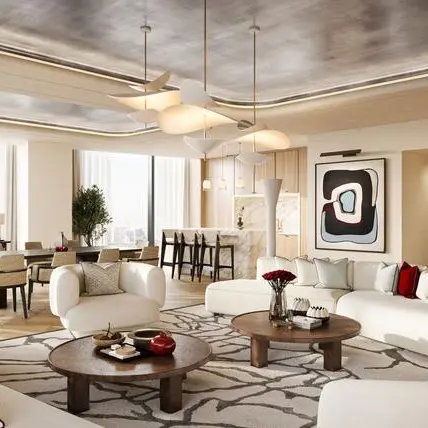PHOTO
Industry-first metering of Red Hat OpenShift and Red Hat Enterprise Linux for on-premises server planned to improve software licensing costs
Dubai, UAE – IBM (NYSE: IBM) announced the new IBM Power E1080 server, the first in a new family of servers based on the new IBM Power10 processor, designed specifically for hybrid cloud environments. The IBM Power10-equipped E1080 server is engineered to be one of the most secured server platforms and is designed to help clients operate a secured, frictionless[iii] hybrid cloud experience across their entire IT infrastructure.
The IBM Power E1080 server is launching at a critical time for IT. As organizations around the world continue to adapt to unpredictable changes in consumer behaviors and needs, they need a platform that can deliver their applications and insights securely where and when they need them. The IBM Institute of Business Value’s 2021 CEO Study found that, of the 3,000 CEOs surveyed, 56% emphasized the need to enhance operational agility and flexibility when asked what they’ll most aggressively pursue over the next two to three years[iv].
Many see the answer to this need in a hybrid cloud computing model, which combines on-premises resources with cloud-based infrastructure and can offer up to 2.5x greater value than a public cloud-only approach[v]. However not all hybrid cloud models are designed equally.
“Organizations in the Middle East and Africa are recognizing that in order to be competitive in today’s marketplace, they need to be able to move with speed and flexibility to react to changes in their customers’ needs in real-time, while continuing to drive innovation,” said Idriss Janati, Director, Servers and Storage Solutions in IBM Middle East and Africa. “The answer to this challenge is the IBM Power E1080 server that offers a frictionless, secure hybrid cloud platform with the ability to scale on demand across the entire infrastructure while allowing businesses to deploy containers to modernize the applications.”
The new IBM E1080 was designed to introduce several key features including:
- Enhancements for hybrid cloud like planned industry-first, by the minute metering of Red Hat software including Red Hat OpenShift and Red Hat Enterprise Linux, 4.1x greater OpenShift containerized throughput per core vs x86-based servers[vi], and architectural consistency and cloud-like flexibility across the entire hybrid cloud environment to drive agility and improve costs without application refactoring.
- New hardware-driven performance improvements that deliver up to 50% more performance and scalability than its predecessor the IBM Power E980[vii], while also reducing energy use and carbon footprint of the E980, allowing customers to do more with less. The E1080 also features four matrix math accelerators per core, enabling 5x faster inference performance as compared to the E980[viii].
- New security tools designed for hybrid cloud environments including transparent memory encryption so there is no additional management setup, 4x the encryption engines per core, allowing for 2.5x faster AES encryption as compared to the IBM Power E980[ix], and security software for every level of the system stack.
- A robust ecosystem of ISVs, Business Partners, and support to broaden the capabilities of the IBM Power E1080 and how customers can build their hybrid cloud environment, including record-setting performance for SAP® applications in an 8-socket systemii. IBM is also launching a new tiered Power Expert Care service to help clients as they protect their systems against the latest cybersecurity threats while also providing hardware and software coherence and higher systems availability.
"When we were designing the E1080, we had to be cognizant of how the pandemic was changing not only consumer behavior, but also our customer's behavior and needs from their IT infrastructure," said Dylan Boday, VP of Product Management for AI and Hybrid Cloud. "The E1080 is IBM’s first system designed from the silicon up for hybrid cloud environments, a system tailor-built to serve as the foundation for our vision of a dynamic and secure, frictionless hybrid cloud experience."
For more information please visit: http://www.ibm.com/it-infrastructure/power/power10.
[i] SPECInt Math: (Power10 2170 peak /120 core)/(1620 peak/224 cores)=2.5
Max System SPECint IBM Power E1080 (3.55-4,0 GHz, Power10) 120 Cores, 8 CPUs SPECint Score 2170 per CPU Score 271.25 per Core Score 18.08 Date: Audit submitted. Max System SPECint Hewlett Packard Enterprise Superdome Flex 280 (2.90 GHz, Intel Xeon Platinum 8380H) 224 Cores, 8 CPUs Intel Xeon Platinum 8380H Speed 2900 Mhz SPECint Score 1620.00 per CPU Score 202.50 per Core Score 7.23 Date: Feb-2021 Link: CPU2017 Integer Rate Result: Hewlett Packard Enterprise Superdome Flex 280 (2.90 GHz, Intel Xeon Platinum 8380H) (test sponsored by HPE) (spec.org)
[ii] IBM Power E1080; two-tier SAP SD standard application benchmark running SAP ERP 6.0 EHP5; Power10 3.55-4.0 GHz processor, 4,096 GB memory, 8p/120c/960t, 174,000 SD benchmark users (955,050 SAPS), AIX 7.2, DB2 11.5. Certification # 2021059. All results can be found at sap.com/benchmark Valid as of 8/27/21
[iii] IBM Power help deliver a frictionless experience in extending mission-critical workloads across hybrid cloud, without requiring additional middleware or application refactoring
[iv] https://www.ibm.com/thought-leadership/institute-business-value/report/ceo
[v] https://www.ibm.com/downloads/cas/QMRQEROB
[vi] 1. Based on IBM internal testing of Red Hat OpenShift Container Platform 4.8.2 worker nodes running 80 pods each with 10 users using the Daytrader7 workload (https://github.com/WASdev/sample.daytrader7/releases/tag/v1.4 ) accessing AIX Db2 databases. Average cpu utilization for the OCP worker nodes is > 95%. Comparison: E1080 running OCP accessing AIX Db2 on an S922 versus OCP on Cascade Lake accessing AIX Db2 on the same S922. Valid as of 8/26/2021 and conducted under laboratory conditions. Individual result can vary based on workload size, use of storage subsystems & other conditions. 2.IBM Power E1080 (40 cores/3.8 GHz/2 TB memory) in maximum performance mode, 25 Gb two-port SRIOV adapter, 1 x 16Gbs FCA, with PowerVM. E1080 configuration consists of 2 OCP worker lpars each with 10 cores running SMT8 with 256GB of memory and a VIOS lpar with 4 cores and 8GB of memory. PowerVM LPARs were also affinitized on their respect sockets/NUMA nodes. IBM Power E1080 worker nodes run CoreOS Linux 4.18.0-305.10.2.el8_4. CentOS based DayTrader7 containers with Open Liberty 21.0.0.6, IBM Semeru Runtime Open Edition (build 1.8.0_302-b08) Eclipse OpenJ9 VM (build openj9-0.27.0, JRE 1.8.0 Linux ppc64le-64-Bit Compressed References 20210728_167 (JIT enabled, AOT enabled), JVM flag within jvm.options file within containers when starting JVM-->“-XX:-PortableSharedCache”. 3.Competitive system: Intel(R) Xeon(R) Gold 6248 CPU (Cascade Lake) in performance mode, 40 cores/3.9GHz/512GB memory), 25Gb two-port SRIOV adapter, 1 x 16Gbps FCA, RHEL 8.4 KVM. Cascade Lake competitive configuration of 2 KVM guests as OCP worker nodes with 20 cores running hyperthreading (HT) with 256GB of memory. SRIOV device passthrough from host to KVM guest. The KVM guest’s CPU & memory are pinned to host’s CPU with respect to their associated NUMA nodes. Cascade Lake worker nodes run worker node OS CoreOS Linux 4.18.0-305.10.2.el8_4. CentOS based DayTrader7 containers with Open Liberty 21.0.0.6, IBM Semeru Runtime Open Edition (build 1.8.0_302-b08) Eclipse OpenJ9 VM (build openj9-0.27.0, JRE 1.8.0 Linux amd64-64-bit Compressed References 20210723_193 (JIT enabled, AOT enabled) JVM flag within jvm.options file within containers when starting JVM-->“-XX:-PortableSharedCache. 4.Database system S922: Model 9009-22G with 22 cores (2400 MHz) and 1TB of memory. S922 configuration consists of 2 AIX lpars each with 8 cores running SMT8 with 131GB of memory, and a VIOS lpar with 2 cores and 16GB of memory.
[vii] Based on published rPerf results for Power E980/12 core compared to IBM Internal rPerf measurements (using the same methodology) for Power E1080/15 core
[viii] 5x improvement in per socket inferencing throughput for large size 32b floating point inferencing models from Power9 E980 (12-core modules) to Power10 E1080 (15-core modules). Based on IBM testing using Pytorch, OpenBLAS on the same BERT Large with SqUAD v1.1 data set.
[ix] AES-256 in both GCM and XTS modes runs about 2.5 times faster per core when comparing Power E1080 (15-core modules ) vs. Power E980 (12-core modules) according to preliminary measurements obtained on RHEL Linux 8.4 and the OpenSSL 1.1.1g library.
© Press Release 2021
Disclaimer: The contents of this press release was provided from an external third party provider. This website is not responsible for, and does not control, such external content. This content is provided on an “as is” and “as available” basis and has not been edited in any way. Neither this website nor our affiliates guarantee the accuracy of or endorse the views or opinions expressed in this press release.
The press release is provided for informational purposes only. The content does not provide tax, legal or investment advice or opinion regarding the suitability, value or profitability of any particular security, portfolio or investment strategy. Neither this website nor our affiliates shall be liable for any errors or inaccuracies in the content, or for any actions taken by you in reliance thereon. You expressly agree that your use of the information within this article is at your sole risk.
To the fullest extent permitted by applicable law, this website, its parent company, its subsidiaries, its affiliates and the respective shareholders, directors, officers, employees, agents, advertisers, content providers and licensors will not be liable (jointly or severally) to you for any direct, indirect, consequential, special, incidental, punitive or exemplary damages, including without limitation, lost profits, lost savings and lost revenues, whether in negligence, tort, contract or any other theory of liability, even if the parties have been advised of the possibility or could have foreseen any such damages.




















